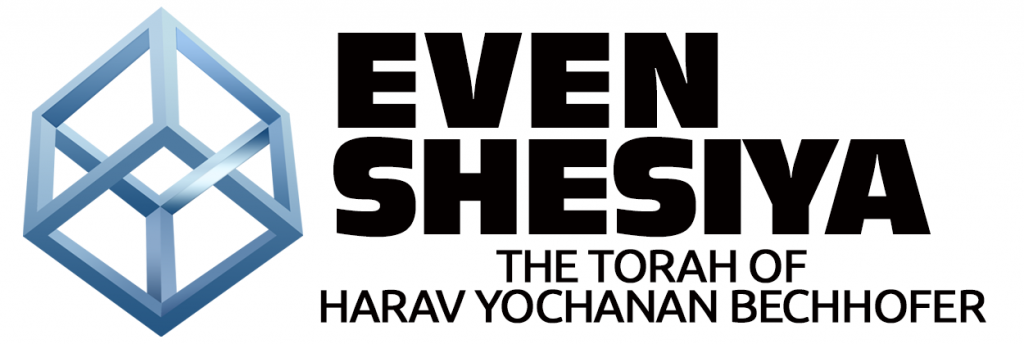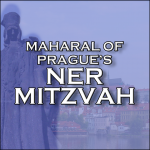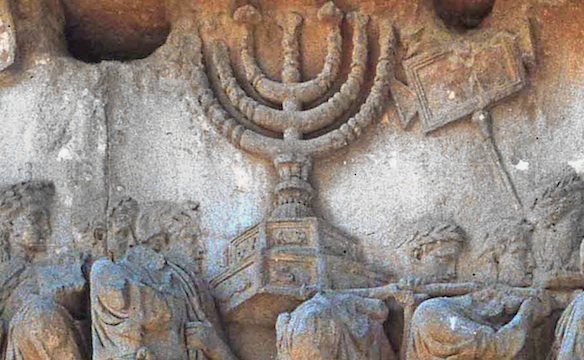Click here to download PDF
7 & 3
The first thing to observe, is that the Torah saw fit to separate the 10 plagues into two different Parshiyos. Seven out of ten appear in last week’s Parsha, Parshas Veyeira and three out of ten are in this week’s Parsha. Every Parsha represents a whole different lesson from Hashem. The breaks between the Parshiyos are for contemplation. The next Parshiya is a new level, therefore, the three later plagues are on a whole different level than the first seven. It’s something that we have to explore.
Darkness
There’s a common denominator between the last three plagues, in that they are all referred to as ‘darkness’. By the first of the three, that of locust, the possuk says very openly, “it’s going to cover “the eye of the earth” (we are going to come back to this concept in a second) and you won’t be able to see the earth”. There is darkness, that the earth will become invisible. As Rashi explains the p’ssukim, if you would take a satellite view of Egypt, you would see solid black of the locusts, everywhere where the Egyptians lived and where the Jews lived, you wouldn’t see that solid black.
The next plague, the plague of darkness per se, where you couldn’t see anything, except the Jews, they had light. Then, in the final plague, the plague of the firstborn, it happened in the “middle of the night”. This common denominator of darkness in these last three plagues is not a coincidence.
Why Pass over?
The Torah saw fit to put the last three plagues together with the actual Exodus from Egypt. We know the whole Exodus is called ‘Pesach’ because the final plague leads into the Exodus. The final plague happens on seder night, the plague of the firstborn, where Hashem “passed over” the Jewish people. What does that mean? Rashi explains, if you would take a satellite picture, of Egypt, you would see Egyptians dropping dead in a straight line, all Egyptians along that line were dropping dead and “falling like dominoes”, if there was a Jewish house in the way, the death force “jumps over” him and the Egyptian behind him drops dead, in a continuous straight line. That’s ‘Pesach’- “I will pass over you”. Why does the death force have to go in a straight line making it necessary to “jump over the Jew”? Chart a windy path, and go around the Jew. Why the “passing over”?
What is the “Eye of Earth”?
In the beginning of the Parsha, Moshe is commanded to appear before Pharoh because Hashem ‘hardened his heart’. Pharoh is broken already. These last plagues are not about convincing him. It’s all for “doing more miracles”. In the plague of locusts, G-d says, “it’s going to cover the eye of the earth and you won’t be able to see the earth”. What is this thing, the ‘eye of the earth’? The Passuk could just say, ‘you won’t be able to see the earth’. We find this expression, the ‘eye of the earth’ later, in Parshas Balak when Balak complains to Bilaam. He needs his help to curse the Jewish people. “There is a nation that left Egypt and it’s covering the ‘eye of the earth’ and they are encamped opposite me. What is the ‘eye of the earth’?
A matter of perspective
‘Eye of the earth’, refers to an earthly perspective! The perspective that the gentiles live by. The way that the goyim express their ‘eye of earth’ changes from generation to generation. When the gentiles were superstitious pagans, they thought that there was a wind God and a sun God, that run the world and if you don’t see it this way, you’re just not looking! It was ‘obvious’ to them to serve these forces. When they became a little more educated and a little less superstitious and then they talked about the laws of nature, whether it’s the physical laws, or whether it’s the laws of economy as “the way it is”. That’s the ever-changing, earthly perspective referred to by “eye of earth” – the way it looks to the average person on earth.
Then there is the “Heavenly perspective”. Being aware that everything comes from Heaven. Knowing that all our affairs are administrated by Divine providence. This is the “Jewish perspective” on reality. When the Jewish people were taken out of Egypt, the goal wasn’t just to attain a secular, political freedom, and the right of self-determination as a nation. If it would have been limited to that, the whole story of the Exodus could have been a lot shorter, and it could have ended in last week’s Parsha after 5 plagues, after Pharoh was already a broken man. Yetziyas Mitzrayim is about breaking past the whole secular way of life, to be a Holy nation belonging to Hashem, and hence a nation that has a “Heavenly perspective” on reality. “Yetzias Mitzrayim” literally means ‘getting out of narrowness’. To get out of the ‘earth box’, that allows for all vices and all falsehood. Freedom from the whole earthly way of looking at things. These are the levels that are being set in this week’s Parsha.
Anti-Semitism
This explains Anti-Semitism. “The Jew just doesn’t belong”. “The Jew makes us nervous”. Why do people feel that way about Jews more than any ethnic group? The Jew innately doesn’t belong. The Jew represents a whole different world order and a whole different perspective on reality. The gentiles only have only an earth perspective. We are categorically different. We broke past the ‘earth box’ and we see things with a heavenly perspective. Therefore, the gentiles feel we are a threat to their “way of life”. That’s what Balak meant when he said, ‘they are covering the eye of the earth’. “Our way of life, and our way of seeing and doing things, they are ‘covering over’ and that’s why we have to get rid of them.
Our Light – their Darkness
In these last three plagues, there is a common denominator of darkness for the Egyptians, not darkness for us. We are living on a higher level, that is a threat to their way of life. Since they can’t relate to this higher level it is ‘darkness’ for them. They can’t ‘see things’ our way. We bring a different perspective that is invisible to them. This is why in these last three plagues there is the common denominator of ‘darkness’. This is the power that the Jewish people are absorbing in this week’s Parsha.
Nature vs Super Natural
To further understand, the 10 plagues are parallel to the 10 sephiros, the 10 primary ways through which Hashem runs the world. The 7 lower sephiros, are forms of Divine providence that give the natural order and the natural order come from those 7 forces of Hashem’s providence. But then there’s the ‘higher way’, which are the ‘roots’ of nature. This level is where Hashem plans destiny itself and legislates the laws of nature. These levels are called “Keser” – Hashem’s will, “Chochma” – Hashem’s wisdom and “Bina” – Hashem’s understanding, in other words: They are “His plan” for reality. The Jewish people are “rooted” in that plan, and therefore we ‘see the plan’, which is ‘darkness’ to the gentiles. “You have done so many wonders Hashem our Lord, your wonders and thoughts are directed towards us’ (Tehillim 40:6). We are ‘rooted’ above nature, in Hashem’s master plan. When Hashem first envisioned the world – He envisioned the Jewish people. This is the power being revealed in the last 3 plagues, the Jewish people is absorbing that power, so for them it is ‘light’ – for the gentiles – ‘darkness’
Pass Over
Thus, by the plague of the first born, we are already living in a different dimension from the Egyptians. All the Egyptians were dropping dead in a ‘straight line’, demonstrates that death was decreed on all first born in earthly Egypt. The fact that the Jew doesn’t die, shows that they were are not in the same dimension. He “passed right over us” to show we exist in a different dimension. We are on a whole different plateau than the rest of the natural world. That’s “Chag Hapesach” – we were catapulted to a whole higher level. We are rooted in G-d’s master plan itself, above nature, with a perspective above the ‘eye of the earth’.
|
Sponsored Liluy Nishmas Shimon ben Avraham Shlomo z’l |
Good Shabbos.










